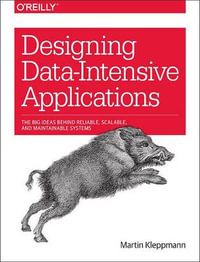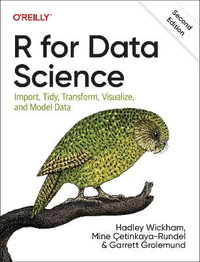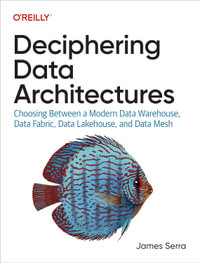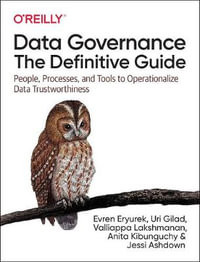| Preface | p. vii |
| Introduction | p. 1 |
| The sense of vision | p. 1 |
| Stereo | p. 4 |
| Structure from motion | p. 5 |
| Photometric stereo and other techniques based on controlled light | p. 5 |
| Shape from shading | p. 6 |
| Shape from texture | p. 6 |
| Shape from silhouettes | p. 6 |
| Shape from defocus | p. 6 |
| Motion blur | p. 7 |
| On the relative importance and integration of visual cues | p. 7 |
| Visual inference in applications | p. 8 |
| Preview of coming attractions | p. 9 |
| Estimating 3-D geometry and photometry with a finite aperture | p. 9 |
| Testing the power and limits of models for accommodation cues | p. 10 |
| Formulating the problem as optimal inference | p. 11 |
| Choice of optimization criteria, and the design of optimal algorithms | p. 12 |
| Variational approach to modeling and inference from accommodation cues | p. 12 |
| Basic models of image formation | p. 14 |
| The simplest imaging model | p. 14 |
| The thin lens | p. 14 |
| Equifocal imaging model | p. 16 |
| Sensor noise and modeling errors | p. 18 |
| Imaging models and linear operators | p. 19 |
| Imaging occlusion-free objects | p. 20 |
| Image formation nuisances and artifacts | p. 22 |
| Dealing with occlusions | p. 23 |
| Modeling defocus as a diffusion process | p. 26 |
| Equifocal imaging as isotropic diffusion | p. 28 |
| Nonequifocal imaging model | p. 29 |
| Modeling motion blur | p. 30 |
| Motion blur as temporal averaging | p. 30 |
| Modeling defocus and motion blur simultaneously | p. 34 |
| Summary | p. 35 |
| Some analysis: When can 3-D shape be reconstructed from blurred images? 37 | |
| The problem of shape from defocus | p. 38 |
| Observability of shape | p. 39 |
| The role of radiance | p. 41 |
| Harmonic components | p. 42 |
| Band-limited radiances and degree of resolution | p. 42 |
| Joint observability of shape and radiance | p. 46 |
| Regularization | p. 46 |
| On the choice of objective function in shape from defocus | p. 47 |
| Summary | p. 49 |
| Least-squares shape from defocus | p. 50 |
| Least-squares minimization | p. 50 |
| A solution based on orthogonal projectors | p. 53 |
| Regularization via truncation of singular values | p. 53 |
| Learning the orthogonal projectors from images | p. 55 |
| Depth-map estimation algorithm | p. 58 |
| Examples | p. 60 |
| Explicit kernel model | p. 60 |
| Learning the kernel model | p. 61 |
| Summary | p. 65 |
| Enforcing positivity: Shape from defocus and image restoration by minimizing I-divergence | p. 69 |
| Information-divergence | p. 70 |
| Alternating minimization | p. 71 |
| Implementation | p. 76 |
| Examples | p. 76 |
| Examples with synthetic images | p. 76 |
| Examples with real images | p. 78 |
| Summary | p. 79 |
| Defocus via diffusion: Modeling and reconstruction | p. 87 |
| Blurring via diffusion | p. 88 |
| Relative blur and diffusion | p. 89 |
| Extension to space-varying relative diffusion | p. 90 |
| Enforcing forward diffusion | p. 91 |
| Depth-map estimation algorithm | p. 92 |
| Minimization of the cost functional | p. 94 |
| On the extension to multiple images | p. 95 |
| Examples | p. 96 |
| Examples with synthetic images | p. 97 |
| Examples with real images | p. 99 |
| Summary | p. 99 |
| Dealing with motion: Unifying defocus and motion blur | p. 106 |
| Modeling motion blur and defocus in one go | p. 107 |
| Well-posedness of the diffusion model | p. 109 |
| Estimating Radiance, Depth, and Motion | p. 110 |
| Cost Functional Minimization | p. 111 |
| Examples | p. 113 |
| Synthetic Data | p. 114 |
| Real Images | p. 117 |
| Summary | p. 118 |
| Dealing with multiple moving objects | p. 120 |
| Handling multiple moving objects | p. 121 |
| A closer look at camera exposure | p. 124 |
| Relative motion blur | p. 125 |
| Minimization algorithm | p. 126 |
| Dealing with changes in motion | p. 127 |
| Matching motion blur along different directions | p. 129 |
| A look back at the original problem | p. 131 |
| Minimization algorithm | p. 132 |
| Image restoration | p. 135 |
| Minimization algorithm | p. 137 |
| Examples | p. 138 |
| Synthetic data | p. 138 |
| Real data | p. 141 |
| Summary | p. 146 |
| Dealing with occlusions | p. 147 |
| Inferring shape and radiance of occluded surfaces | p. 148 |
| Detecting occlusions | p. 150 |
| Implementation of the algorithm | p. 151 |
| Examples | p. 152 |
| Examples on a synthetic scene | p. 152 |
| Examples on real images | p. 154 |
| Summary | p. 157 |
| Final remarks | p. 159 |
| Concepts of radiometry | p. 161 |
| Radiance, irradiance, and the pinhole model | p. 161 |
| Foreshortening and solid angle | p. 161 |
| Radiance and irradiance | p. 162 |
| Bidirectional reflectance distribution function | p. 163 |
| Lambertian surfaces | p. 163 |
| Image intensity for a Lambertian surface and a pinhole lens model | p. 164 |
| Derivation of the imaging model for a thin lens | p. 164 |
| Basic primer on functional optimization | p. 168 |
| Basics of the calculus of variations | p. 169 |
| Functional derivative | p. 170 |
| Euler-Lagrange equations | p. 171 |
| Detailed computation of the gradients | p. 172 |
| Computation of the gradients in Chapter 6 | p. 172 |
| Computation of the gradients in Chapter 7 | p. 174 |
| Computation of the gradients in Chapter 8 | p. 176 |
| Computation of the gradients in Chapter 9 | p. 185 |
| Proofs | p. 190 |
| Proof of Proposition 3.2 | p. 190 |
| Proof of Proposition 3.5 | p. 191 |
| Proof of Proposition 4.1 | p. 192 |
| Proof of Proposition 5.1 | p. 194 |
| Proof of Proposition 7.1 | p. 195 |
| Calibration of defocused images | p. 197 |
| Zooming and registration artifacts | p. 197 |
| Telecentric optics | p. 200 |
| Matlab implementation of some algorithms | p. 202 |
| Least-squares solution (Chapter 4) | p. 202 |
| I-divergence solution (Chapter 5) | p. 212 |
| Shape from defocus via diffusion (Chapter 6) | p. 221 |
| Initialization: A fast approximate method | p. 229 |
| Regularization | p. 232 |
| Inverse problems | p. 232 |
| Ill-posed problems | p. 234 |
| Regularization | p. 235 |
| Tikhonov regularization | p. 237 |
| Truncated SVD | p. 238 |
| References | p. 239 |
| Index | p. 247 |
| Table of Contents provided by Ingram. All Rights Reserved. |

























